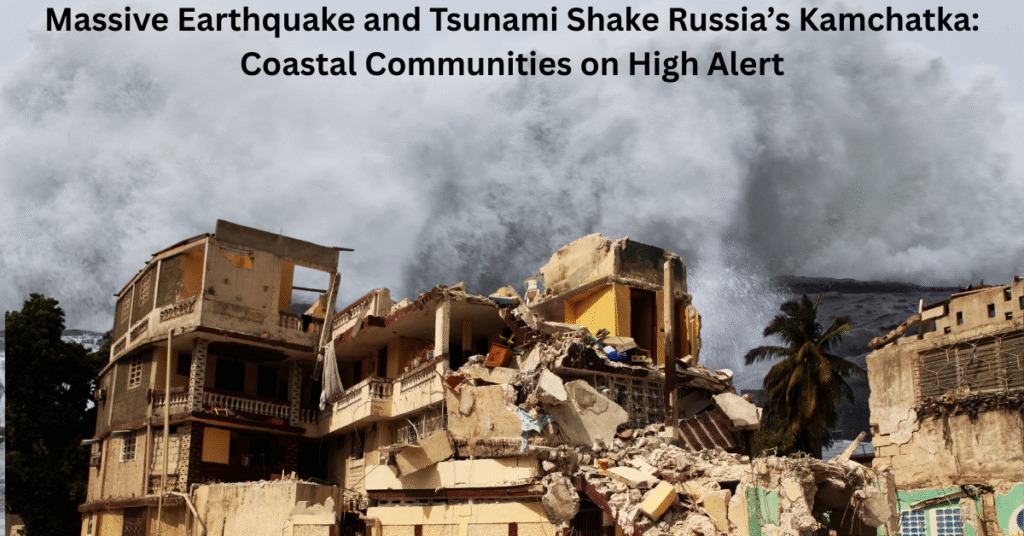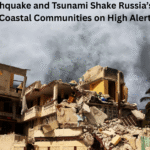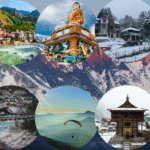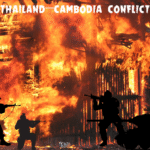Let’s take you to the windswept Kamchatka Peninsula in Russia, where locals woke up early in the morning to witness something scary than the normal sounds of volcanoes. Yesterday, July 30, 2025, the earth itself delivered a staggering wake-up call, a magnitude 8.7 earthquake, later upgraded by some agencies to 8.8—the strongest seen around these regions in decades.
Waves That Traveled the World
Yesterday, in the morning in Kamchatka, people quickly ran outside into the cold as the ground shook, things fell over, and the power went off for a moment. Imagine being in your relaxed mode, feeling the walls move, and hearing glass break this is what thousands of people in Petropavlovsk-Kamchatsky witnessed, the biggest nearby city, experienced. Then the sirens sounded: the earthquake had caused a tsunami, with waves up to four meters high, moving fast across the Pacific Ocean. Evacuations from Russia to the Pacific Islands
No one was waiting around. Kamchatka’s governor, Vladimir Solodov, wasted no time labeling this the “strongest in decades of tremors,” while urging residents, especially those near the beaches, to seek higher ground. Word spread rapidly even a kindergarten suffered visible damage, emphasizing how close the disaster struck.
But Kamchatka wasn’t alone. As the seismic waves spread across the ocean, warnings quickly went out to other countries. Japan, which often deals with earthquakes and tsunamis, quickly told people along much of its Pacific coast to evacuate. Sirens went off in places like Hokkaido, and officials in Hawaii also warned people to move to safer areas. Honolulu’s iconic beaches and usually bustling Waikiki emptied as residents and tourists rushed inland, traffic clogging escape routes as families, surfers, and business owners all prayed they weren’t facing a repeat of past disasters.
A Layered Threat Across the Pacific
Both Japan and the U.S. Geological Survey said this was a massive earthquake. The center of the quake was just off the coast of Kamchatka, about 125 km away from the city of Petropavlovsk-Kamchatsky, and it happened close to the surface, which made the shaking stronger. Japan’s weather agency said tsunami waves could be as high as three meters, and Hawaii’s warning center warned of dangerous waves around all the islands.
The warning wasn’t just for Russia and nearby countries. A large tsunami alert covered areas from Alaska and Guam down to the U.S. West Coast—including California, Oregon, and Washington. Even places far away like Chile and the Solomon Islands got warnings because the Pacific Ocean is connected, so tsunami alerts spread quickly to many countries.
Why Kamchatka? The Ring of Fire’s Relentless Power
Kamchatka and the nearby regions sit on the “Ring of Fire,” an area around the Pacific Ocean where earthquakes and volcanoes are common. Events like this earthquake and tsunami remind us that, no matter how advanced our technology is, nature can still surprise us and be very powerful. Staying Vigilant & Connected
As the Pacific settled, authorities in Japan, Hawaii, and Russia’s Far East advised everyone to stay away from the water and heed official updates—tsunamis can deliver several dangerous waves over hours, and sometimes the most significant surge isn’t the first. Local anecdotes rolled in: in Honolulu, one resident described a sea of taillights heading inland; in Japan, evacuation centers filled quickly, stocked with emergency supplies but heavy with anxious faces.
What Now?
Despite the morning’s drama, preliminary reports suggest no deaths just property damage and nerves stretched thin. Emergency teams are still watching for aftershocks and checking water levels, while people share stories online about families coming back together and schools moving to safe places quickly. For communities near the coast, today was an important reminder to be ready, listen to warnings, and act fast when sirens go off.
Wherever you are reading this, please stay careful, understand how mighty the Earth can be, and always have a safety plan. When an earthquake happens, it doesn’t just shake the ground it can also shake how safe we feel.






